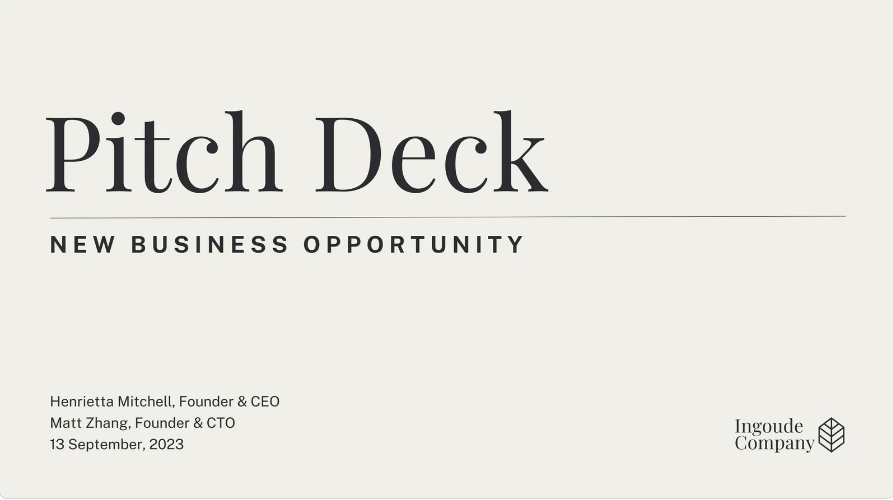You have an idea and you think it’s brilliant. But to do something about it, you need other people (those, in particular, who have a say in the fate of your future project) to think it’s brilliant, too! How do you convince them, all those executives, potential investors, and other decision-makers, to put trust in you and your idea? The short answer is, you pitch.
What Is Pitching
Basically, a pitch is a brief presentation of your business idea to those with resources or power to make it possible. The goal is to pack your proposal into a small deadly cannonball of a message that will transmit the very core of your idea while also putting across its value and profit.
Although the definition remains more or less the same, the art of pitching has evolved over the years. Now, in 2026, it’s certainly not enough to just be good at what you do—you also have to be good at selling it. To help you with that, we’ve prepared a guide on how to pitch efficiently in 2026.
Before You Decide to Pitch
Before letting your idea out into the world, make sure it’s worth the effort first. Take a long look at it and ask yourself:
- Is it unique? (No one in the field offers exactly the same kind of product or service, and if they do, yours is going to be a better solution.)
- Is it innovative? (You offer something new to the industry, something that will move it forward.)
- Is it relevant? (The problem your idea is going to solve matters here and now.)
- Is it well-defined? (Your idea is not too vague or too raw, you can sum it up in a few words and explain how it can be done.)
- Can you do it? (Given the resources you’re asking for, you’re capable of putting your words into action.)
- Are you prepared for it? (Having a legal business structure such as an LLC to protect your personal assets in case of a business failure.)
If the answer to all these questions is yes, then rest assured: you and your idea are ready to conquer. It’s time to prepare the pitch.
Preparing the Pitch
First rule: a pitch must be short. Sure, we all recognize the power of story-based marketing, and you definitely should make your pitch entertaining but don’t beat around the bush for too long. The faster you get to the point the better.
Keep your pitch simple and consistent with a clean story structure: from a hook to a promise to a CTA.
Focus on your market. Describe the problem you’re going to solve or a need you’re going to satisfy, and present the idea through that lens. But be honest about what you can do; credibility is your friend here.
Who are your competitors? Mention them, explain why your solution is better. Is there someone who can vouch for you? Credentials help earn trust by association.
Know your audience. Be sure to research the backgrounds of those to whom you are pitching, take into account their occupation and area of expertise. And then, use this knowledge to be creative and impress them right where it counts. For example, if you’re an artist who is pitching to a print publisher, don’t just go in with digital art—bring printed samples of your works as well.
Make your pitch memorable and engaging. Add specific examples, original comparisons, and catchy phrases that will linger in your listeners’ heads even after you finish.
And don’t forget to practice!
Prepare the Presentation (Like It’s 2026)
It’s 2026 and no one falls for a good old PowerPoint presentation anymore. However crafty or well-designed it may be, it’s just boring. It’s what everyone expects to see. Besides, PowerPoint can’t offer much in terms of interactivity and visual effects.
Fortunately, there is no shortage of alternate solutions nowadays. Instead of going for the obvious, you should put in time and effort and find that one format that compliments your content best. For our part, we recommend online flipbooks. Turned into a flipbook, your presentation will look like a polished printed publication but with interactive features such as swift search, highlighted outbound links, videos, animated graphs, and whatnot.
What's more, you can set a single page flip layout for your documents. Pitch your business ideas and impress your audience with a set of wide pages that turn, bend, and rustle as if in a realistic album. Like in this engaging presentation.
Try for free
💡 Don't have a PDF yet?
If you want to create a pitch deck but don't have a PDF yet, we've got you covered. Check out this free pitch deck Canva template that you can design and then get back to FlippingBook for creating online pitch decks right away.
What's more, FlippingBook has a convenient integration with Canva that allows you to seamlessly proceed from designing a PDF in Canva to publishing your PDF to FlippingBook, where you can customize it and make it fun and interactive.
How to Pitch
Pitching can be hard, especially if you’re not accustomed to giving public speeches.
However, to pitch successfully, you have to believe not only in your idea but also in yourself. Let your passion for the project show—that will make your pitch even more convincing, and your words inspiring. Don’t be afraid of using hand motions during your pitch: studies have shown that gestures actually help listeners understand you better.
But don’t let yourself get carried away, either. Be confident but not too confident, expressive but not over-exuberant. Stay on course. Remember the structure. Clearly outline your goals and perspectives, explain what you need to make your project work, and why it’s worthy of your audience’s attention and support.
Conclude your pitch with a powerful call-to-action.
What’s After
Pitching is always a gamble and, sure, it’s important to know what you’re going to do if you fail. But it’s no less important to be ready to succeed.
Don’t let the green light take you by surprise. Know your next step and, if victorious, take it.
In Conclusion
This is our advice for a smart and efficient marketing pitch in 2026.
As a new year marches in, we usually promise ourselves to take on big challenges, follow our dreams, and boldly go where no man has gone before. So do that!
Even if there is no meeting with investors or big bosses in the nearest future, stay alert nevertheless. Create an “elevator pitch” (a brief speech that lasts no longer than 20-30 seconds) for your passion project. Then, make a flipbook presentation and add the link to it as a QR code to your business card. Should fate unexpectedly throw you into an elevator with the right person, you can back up your pitch by giving them your card. When they scan the QR code, they will be able to look through the presentation again on their own, share it with someone else in a click, and get back to you if they’re interested.
That way, you can be sure you are fully prepared to meet new opportunities whenever they may turn up.






